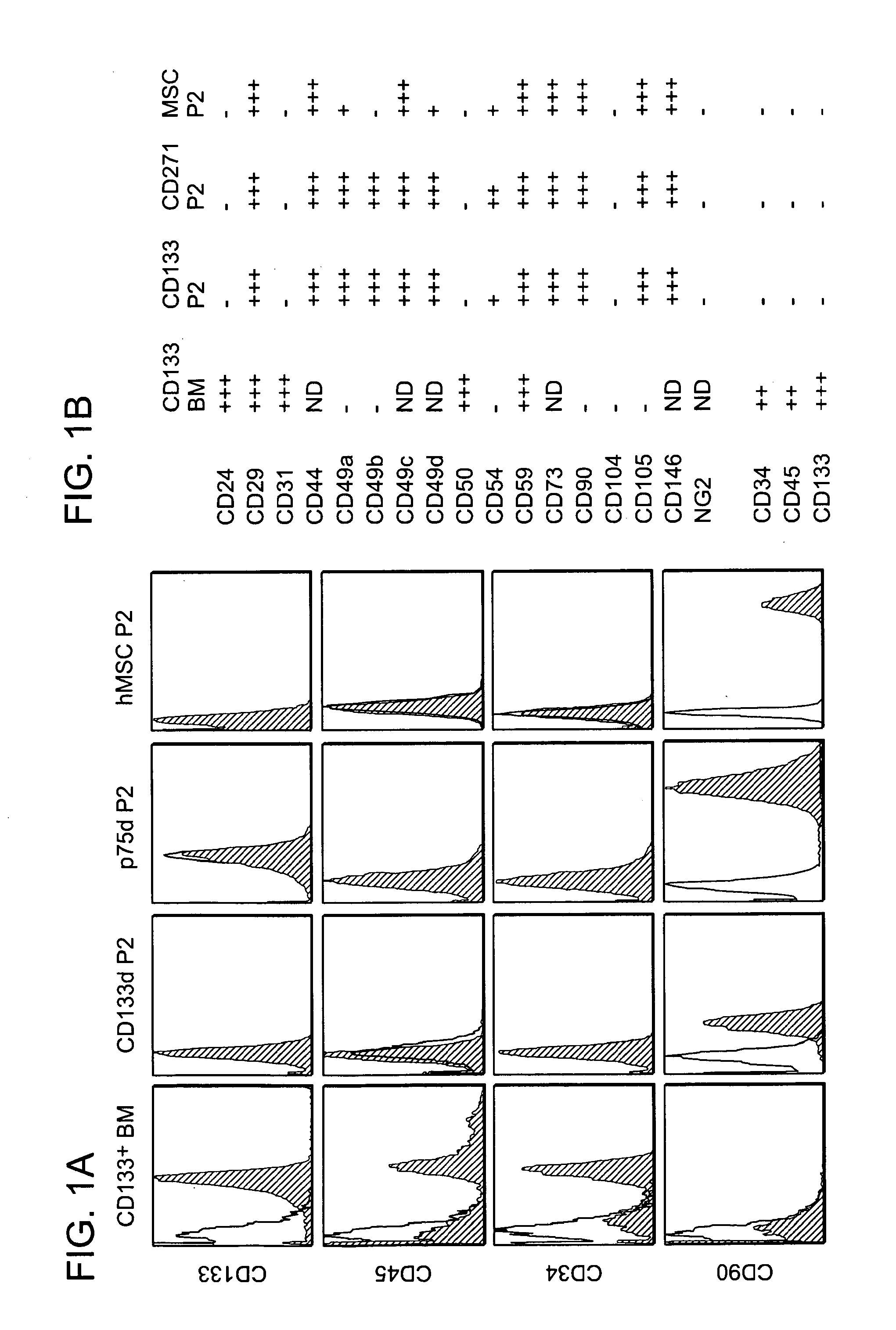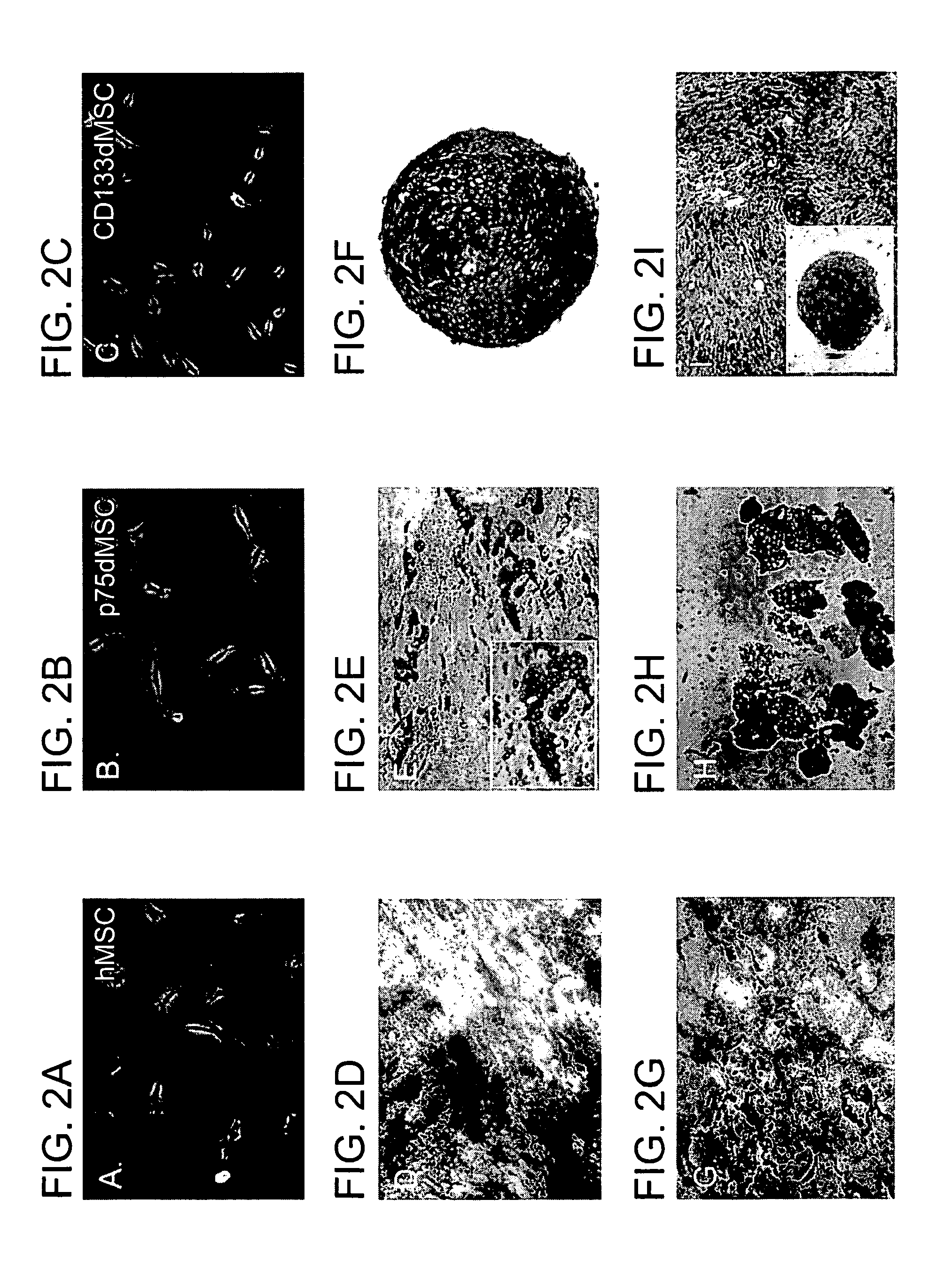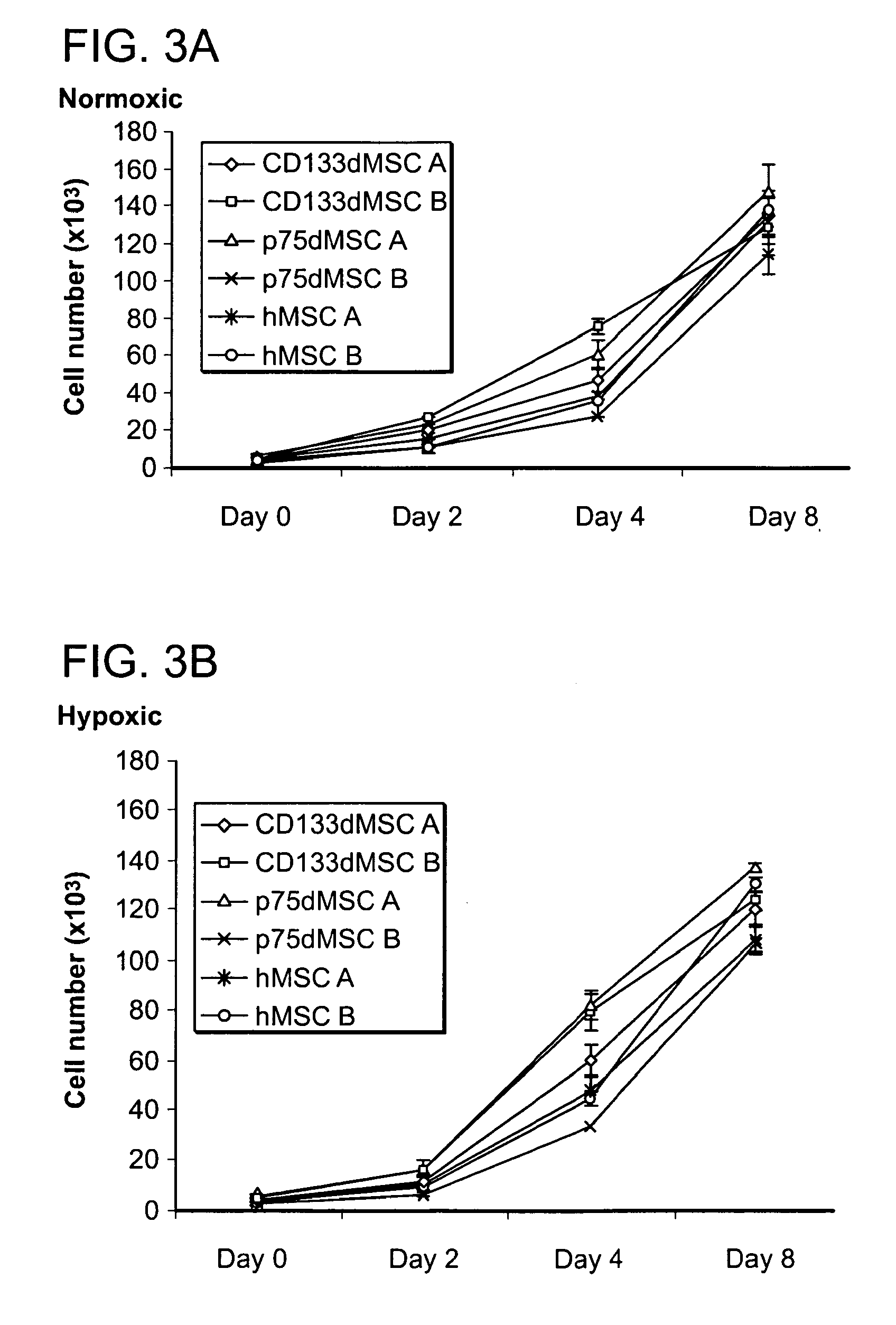Compositions and methods for tissue repair
a tissue and composition technology, applied in the field of compositions and methods for tissue repair, can solve the problems of increasing the death rate of patients, increasing the risk of myocardial infarction, and increasing the risk of ischemic injury to certain cell types, so as to reduce the level of mnpc protection
- Summary
- Abstract
- Description
- Claims
- Application Information
AI Technical Summary
Benefits of technology
Problems solved by technology
Method used
Image
Examples
example 1
P2 CD133- and p75-Derived MSCs Expressed High Levels of CD146, a Marker for Human Non-Hematopoietic Bone Marrow Stem Cells
[0130]Analysis of cell surface epitopes demonstrated that the freshly isolated CD133+ cells were over 90% CD133+, 58% CD45+, 72% CD34+, 44% ABC G2+, 57% CD24+, and were negative for CD49a, CD49b, CD90, and CD105 (FIG. 1). The surface epitopes of the CD133+ cells and the p75LNGFR+ cells changed as they adhered and expanded to generate CD133dMSCs and p75dMSCs (FIG. 1). At passage 2 (P2), the CD133dMSCs were no longer positive for CD133, CD45, CD34, CD31, ABCG2 or CD24. Similarly, P2 p75dMSCs were no longer positive for the p75LNGFR epitope used to initially isolate the cells. P2 cultures of hMSCs, CD133dMSCs, and p75dMSCs were all negative for CD133, CD45, and CD34 (FIG. 1).
[0131]Expanding in serum-containing medium, all of the cells became positive for CD90 (Thy 1) and CD105 (Endoglin), epitopes that are characteristically expressed on hMSCs (FIG. 1). The CD133dMS...
example 2
CD133dMSCs and p75dMSCs Readily Differentiated into Osteoblasts, Adipocytes, and Chondrocytes
[0132]The hMSCs, CD133dMSCs, and p75dMSCs had similar morphologies during culture and through several passages (FIG. 2A, B, C). To assay the differentiation potential of the CD133dMSC and p75dMSC cultures, frozen vials of P1 and P2 cells were thawed, plated at 1,000 cells / cm2, expanded for 5 days, and then transferred to medium to induce osteogenic, adipogenic, or chondrogenic differentiation. The CD133dMSCs and p75dMSCs readily differentiated into osteoblasts, adipocytes, and chondrocytes under the same culture conditions used to differentiate typical hMSCs (FIG. 2D-I).
example 3
Growth Rates of hMSCs, CD133dMSCs, and p75dMSCs Under Normoxic and Hypoxic Conditions
[0133]To determine the proliferative capacity of hMSCs, CD133dMSCs, and p75dMSCs under normoxic and hypoxic conditions (1% oxygen) cells were plated from two donors for each cell type in CCM (100 cells / cm2) and measured cell numbers on days 0, 2, 4 and 8. The hMSCs, CD133dMSCs, and p75dMSCs all grew equally well under normoxic and hypoxic conditions (FIGS. 3A and B).
PUM
 Login to View More
Login to View More Abstract
Description
Claims
Application Information
 Login to View More
Login to View More - R&D
- Intellectual Property
- Life Sciences
- Materials
- Tech Scout
- Unparalleled Data Quality
- Higher Quality Content
- 60% Fewer Hallucinations
Browse by: Latest US Patents, China's latest patents, Technical Efficacy Thesaurus, Application Domain, Technology Topic, Popular Technical Reports.
© 2025 PatSnap. All rights reserved.Legal|Privacy policy|Modern Slavery Act Transparency Statement|Sitemap|About US| Contact US: help@patsnap.com



